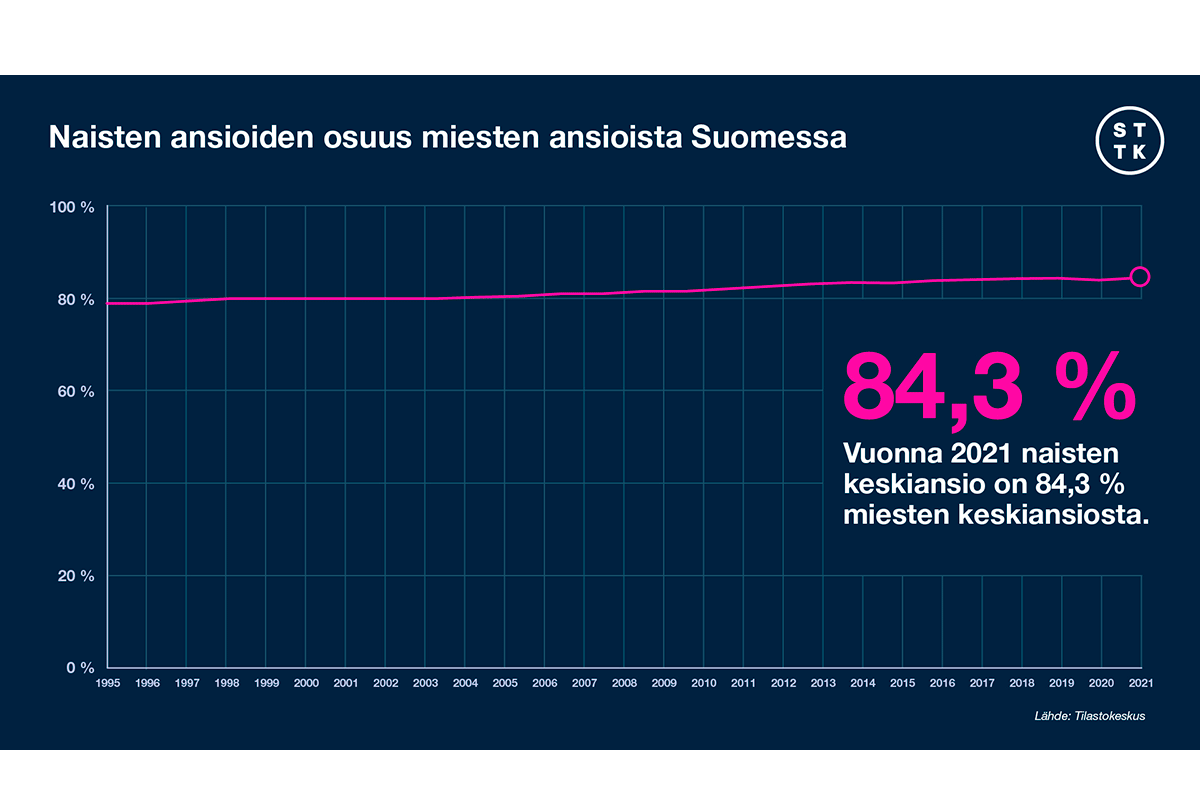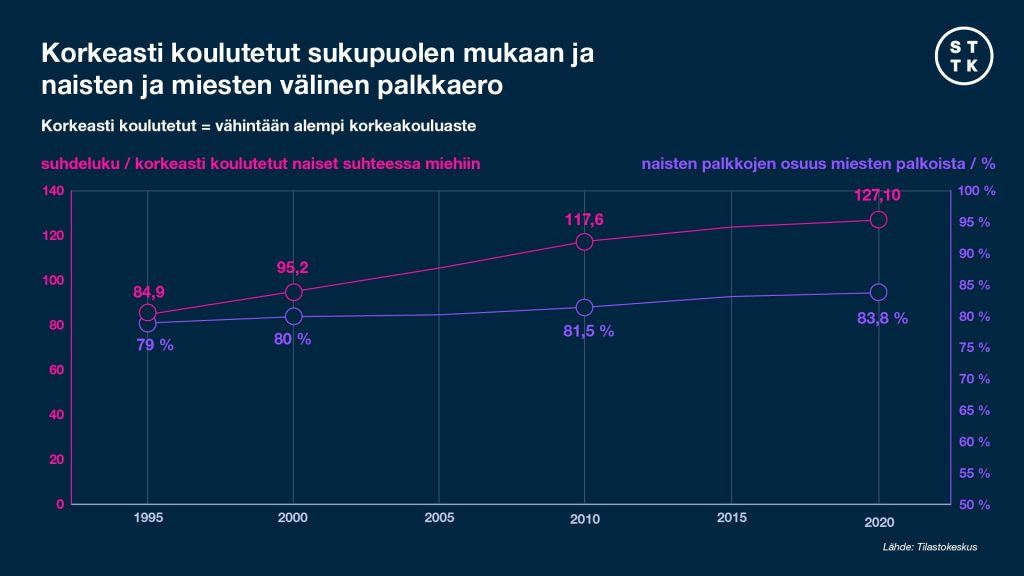
This year, women’s earnings are 84.3 per cent of men’s earnings. Based on this, Women’s PayDay was celebrated on 4 November 2021, and then women will work metaphorically for the rest of the year ‘without pay’. Last year, Women’s PayDay fell on 1 November, and women’s earnings were 83.8 per cent of men’s earnings. A small improvement in wage equality is a step in the right direction, but totally inadequate in terms of the overall picture.
Over the years and decades, the gender pay gap has remained stubbornly virtually unchanged, even though equal pay is a fundamental and a human right. Even the marked increase in women’s educational levels has done little to increase pay equality. This persistent problem of working life must still be addressed more efficiently and effectively.

“There are many reasons behind the pay gap, and narrowing the gap requires several measures to be taken at the same time. These include pay transparency, better wages and working conditions that promote equality through the labour market agreement system, development of remuneration systems and equality plans, less occupational segregation and a more even distribution of family leave,” says Anja Lahermaa from the Ministry of Social Affairs and Health.
The STTK insists upon equal pay for equal work and work of equal value. Very different jobs can make demands that are of equal value and in order to get a clear picture across jobs, those demands must be assessed. The evaluation must be based on actual work tasks and the requirements they place on the employee. The assessment must be carried out as a cooperation between the employer and a staff representative and should show whether the jobs assessed are equally demanding.
“And if they are, then the same salary must be paid for them”, concludes Lahermaa.
The STTK stresses that if it can’t be ensured that as well as the same work also work of equal value is paid the same wage, equal pay will not be achieved.
STTK launched the annual Women’s PayDay in 2011 with the aim of illustrating the pay gap between women and men and making it concrete. Women’s payday is calculated on the basis of data from Statistics Finland’s index of wage and salary earnings for the second quarter. The gender pay gap is used to determine when women’s wages figuratively run out in a given year.


